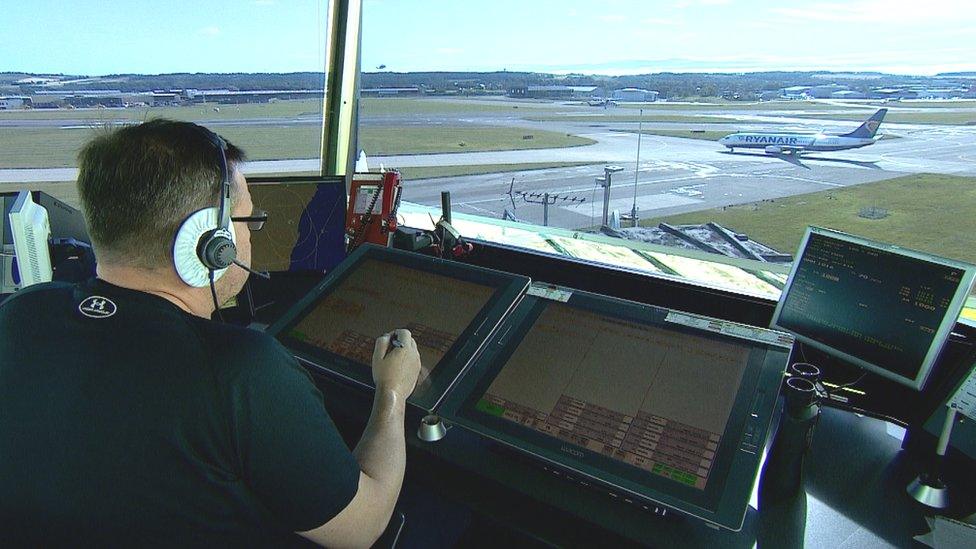Inside Teesside Airport's air traffic control tower
- Published
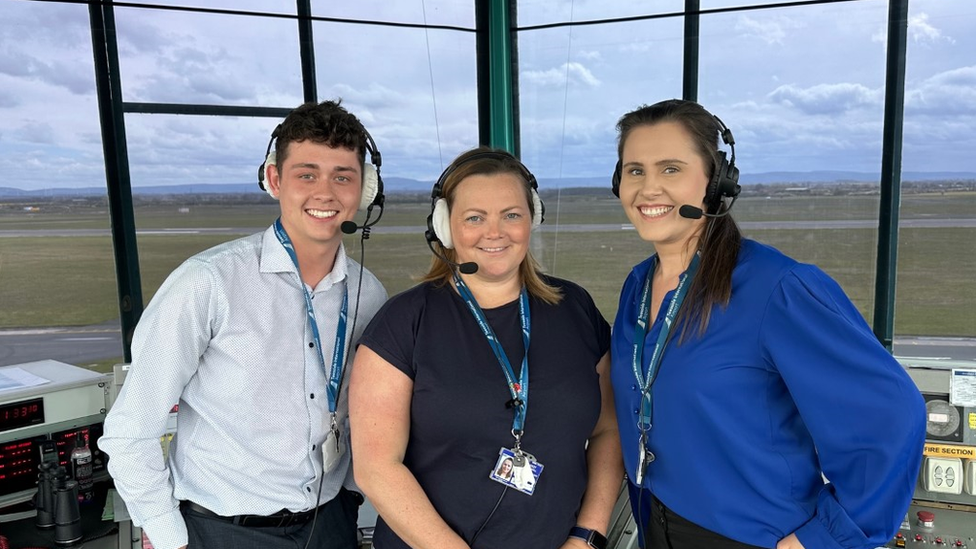
Josh Brown, Sarah Farwell and Sophie Pratt at the Teesside Airport control tower
There are hundreds of vacancies in the UK's air traffic control service amid a national shortage, union bosses have warned.
Prospect, which represents the profession, estimates there could be 250 fewer "validated" air traffic controllers than there were in 2019.
And pockets of airspace in UK skies have had to close for up to 30 minutes at a time this year, according to Newcastle Airport bosses.
The BBC joined the team at Teesside Airport to find out what being a controller involves - and how the shortage might be solved.
Tucked away to the left of the terminal building, a 81-year-old control tower rises above the 7,165ft (2,291m) runway.
Beyond an unassuming door, 14 staff look after everything on the ground and anything within a 40 nautical mile radius in the sky.
Karen Maidment, who runs the air traffic control team, hopes that to address the shortage more people will consider it for a career.
"We've had people from all backgrounds, an ex-plumber, a worker from McDonald's and hairdressers," she says.
"It's not all about academia, it's about you as a person and whether you fit in with the team."
Ms Maidment has run the team since 2017, but has worked at Teesside Airport since the 1980s. She has seen hundreds of staff go through the ranks.

The air traffic control tower opened in 1942 during World War Two
She says the job is more open than ever to people without any aviation, or even prior, experience.
At 18, Josh Brown, from Ingleby Barwick, is her youngest recruit. He is now an air traffic control assistant - the first rung on the ladder.
He is responsible for helping to track incoming aircraft, chart weather and relay requests from pilots.
"It's quite euphoric," he says, describing what it is like to help bring in a Boeing 737.
He is at the very top of the tower, where qualified controller Peter Tweddall has just handed over to colleague, Sarah Farwell.
They swap details on weather conditions, what flights are expected and whether there are any cancellations.
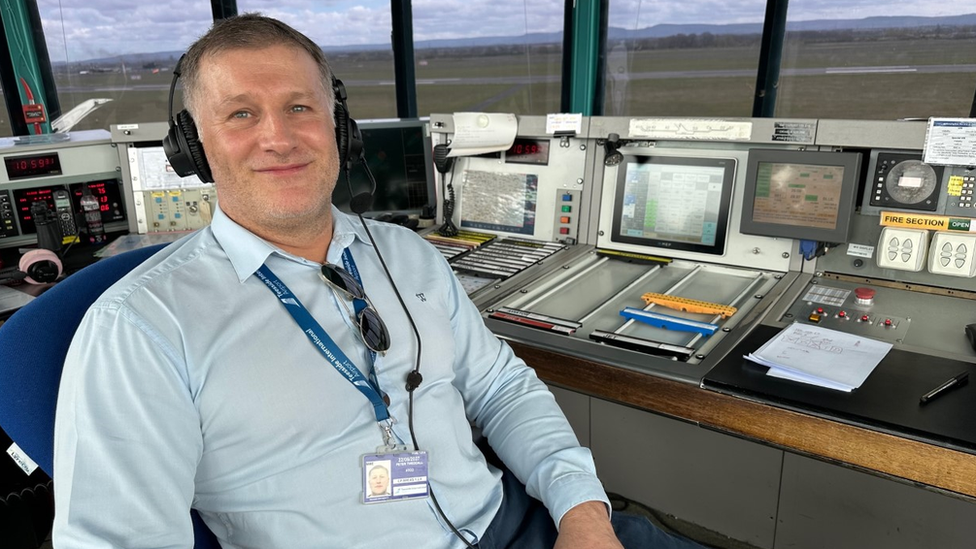
Peter Tweddall served in the Royal Air Force before moving to civil aviation
Mr Tweddall, who served in the Royal Air Force for 26 years, has recently been "validated", equipping him to handle flights at the airport.
He says: "People think we're seeing the same thing again and again.
"That's not the case, it's very unique here, it's never been done at a civil airport where you have civil and ex-military flying."
Controllers are responsible for guiding planes in and out visually, taking requests from pilots and working with the airport's fire service.
Everybody is "pin-point" focussed when they are in that hot seat, Mr Tweddall says.
When they are not, they are either carrying out routine practice drills or on a break.
Regulations state staff can only work up to two hours at a time, in a system designed to keep controllers alert.
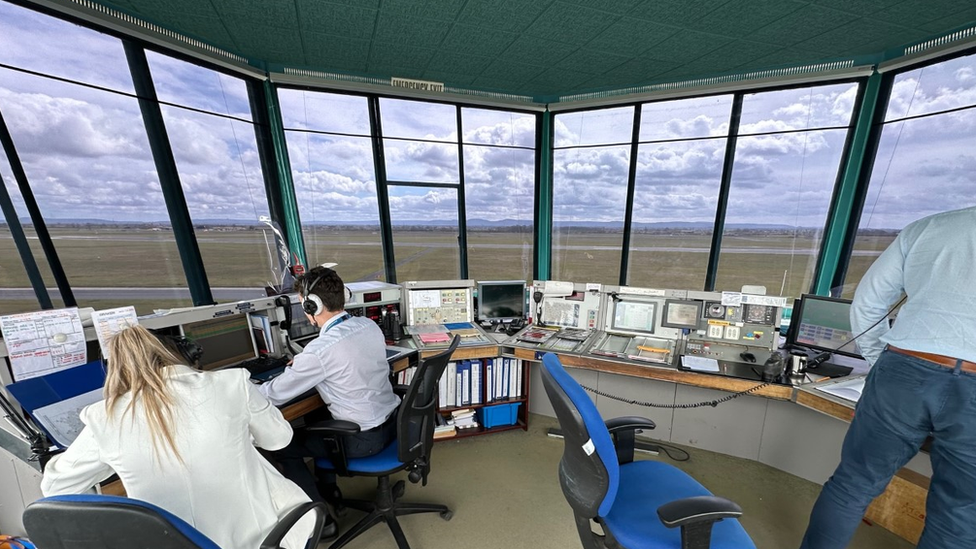
The top of the control tower shows the entire runway
Ms Farwell, an air traffic controller and watch manager, says it can be a particular thrill to manage six military jets wanting to land at once, while handling a passenger plane.
"I spent 10 years at Newcastle Airport and this, for me, is the hardest airport I have worked at," she says.
"People think it's quiet here, but all the flights come here, including training and military."
The airport deals with dozens of planes a day, including Ryanair and TUI Boeing 737s, combat jets and much smaller training flights.
They are all classed as "movements", and Civil Aviation Authority (CAA) figures show Teesside handled 20,319 of them last year. That is estimated to go beyond 24,000 this year.
Air traffic control is split into two - visual control and radar control - although most staff rotate between them.
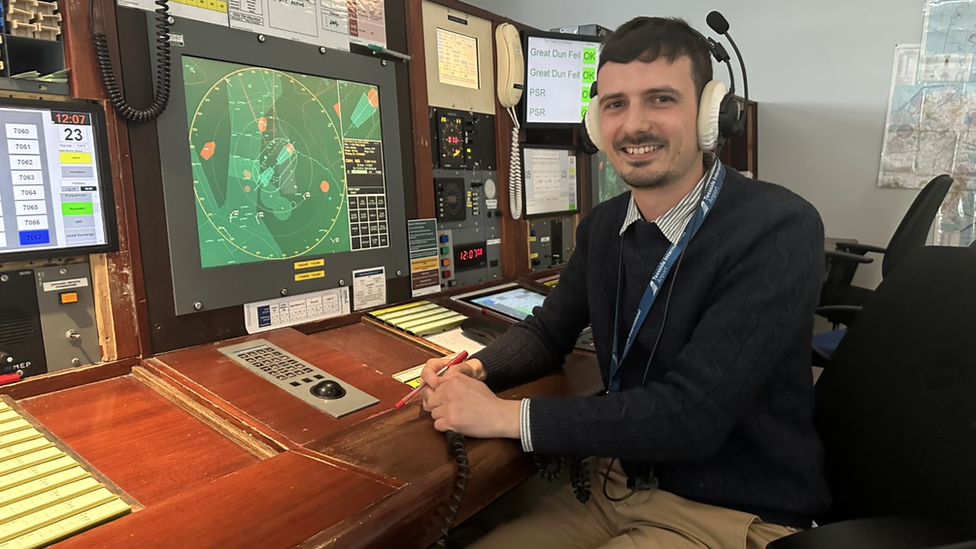
Callum Presley, who previously worked at Gatwick Airport, is now based at Teesside Airport
The radar team is based downstairs, where another set of controllers watch screens in a dark room to monitor the airspace.
Controller Callum Presley explains the airport is responsible for "movements" within 40 nautical miles, up to an altitude of 19,000ft (5,791m).
In front of him large red dots appear on a screen, which also shows the "no-fly" zones around Teesside. They include prisons, a nuclear power station and military bases.
The radar team manages a vast area, with bands reaching out over County Durham, parts of North Yorkshire and the coast.
Mr Presley, who previously worked at Gatwick Airport, says a smaller airport means there are more shared roles, and greater progression opportunities for staff.
One day he can be watching and landing planes from the tower, while on another he can be in the radar room dealing with flights in transit.
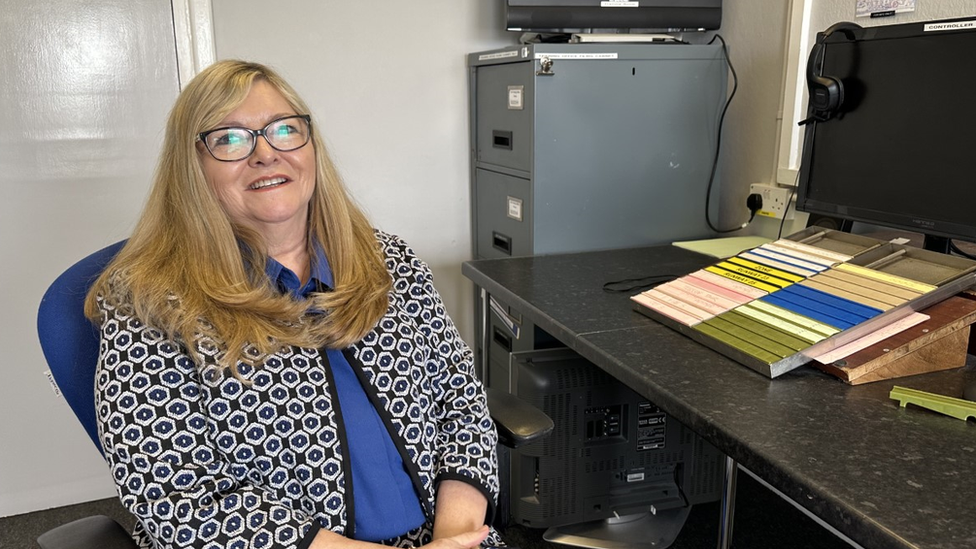
Karen Maidment says air traffic control is a "forgotten" but important industry
But staff shortages are causing some airports in the UK to struggle, warn union bosses.
Last month, Newcastle revealed it had been forced to close its airspace for between 15 to 30 minutes at a time, prompted by sickness and the shortage.
Graeme Mason, from the airport, said it was managing to keep them to "very short spells" and when aircraft was not scheduled to take-off or land.
Prospect says there are a number of contributing factors to the shortage, which includes the knock-on from Covid.
The suspension of the the complex training programme for two years during the pandemic led to some retirees not being replaced, they say.
Meanwhile, the time it takes to get up to speed is proving difficult for airports to fill much-needed positions.
'A forgotten trade'
NATS, which runs some air traffic control teams in the UK, recently launched its drive for more diverse recruits as a way to help overcome the problem.
It says just 30% of air traffic controllers are women, and it wants to help change that.
Helen Fuge, from NATS, says: "Air traffic control should be a career anyone can aspire to, along with the wider aviation industry".
But Ms Maidment admits the industry needs to drum up interest among the next generation of workers.
"It's a forgotten trade but it's a very important one," she says.
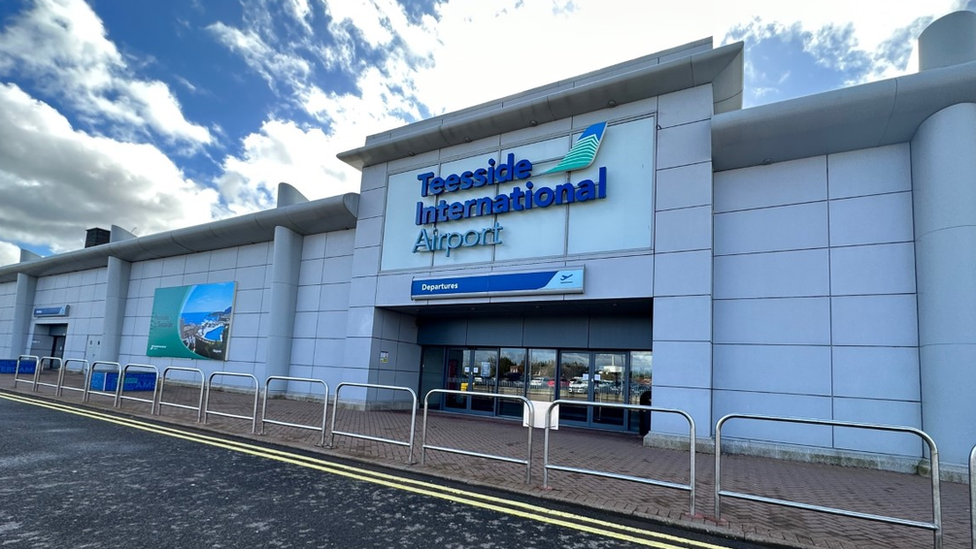
The airport expects to deal with 24,000 aircraft movements this year
"I think we also need to get more people interested at a younger age.
"There are courses in college and universities, but not a great deal focus on air traffic control."
On our way out we catch Mr Tweddall, who has already worked most of his eight hour shift, but is keen to offer some words of advice.
He says: "It's something that you might be really suited to, but you just don't know it yet."
The CAA, which oversees air aviation safety in the UK, declined to comment on reports of the national shortage.
It previously said it was liaising with Newcastle Airport's management to "make sure the safety of all involved is at the heart of the decisions they make".

Follow BBC North East & Cumbria on Twitter, external, Facebook, external and Instagram, external. Send your story ideas to northeastandcumbria@bbc.co.uk, external.
- Published26 February 2020
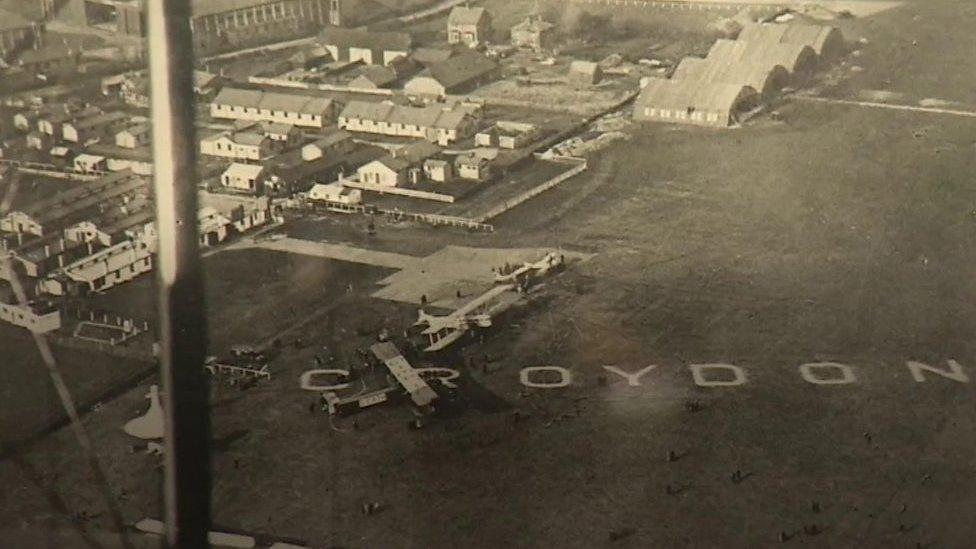
- Published6 August 2018
